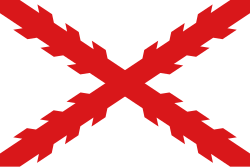This article has multiple issues. Please help improve it or discuss these issues on the talk page . (Learn how and when to remove these messages)
|
Governorate of New Andalucía of Río de la Plata Gobernación de Nueva Andalucía | |||||||||||||||||||
|---|---|---|---|---|---|---|---|---|---|---|---|---|---|---|---|---|---|---|---|
| 1534–1542 | |||||||||||||||||||
 | |||||||||||||||||||
| Status | Governorate of the Crown of Castile | ||||||||||||||||||
| Capital | Asunción | ||||||||||||||||||
| Official languages | Spanish | ||||||||||||||||||
| Religion | Catholicism | ||||||||||||||||||
| Government | Monarchy | ||||||||||||||||||
| King | |||||||||||||||||||
| Historical era | Spanish Empire | ||||||||||||||||||
• Created with the name "Governorate of New Andalusia" | 1534 | ||||||||||||||||||
• Replaced by the Governorate of the Río de la Plata | 1542 | ||||||||||||||||||
| Currency | Escudo | ||||||||||||||||||
| |||||||||||||||||||
The Governorate of New Andalusia [1] was a Spanish Governorate of the Crown of Castile in South America which existed between 1534 and 1542.
